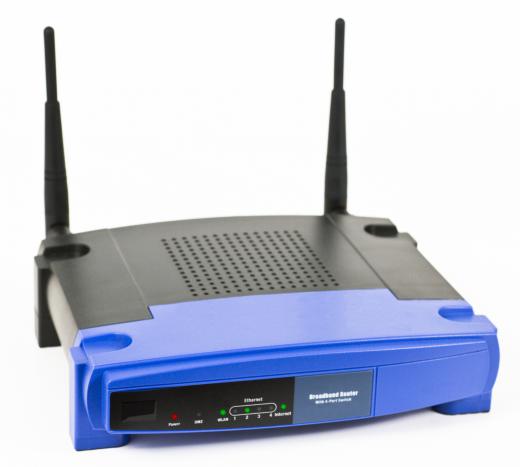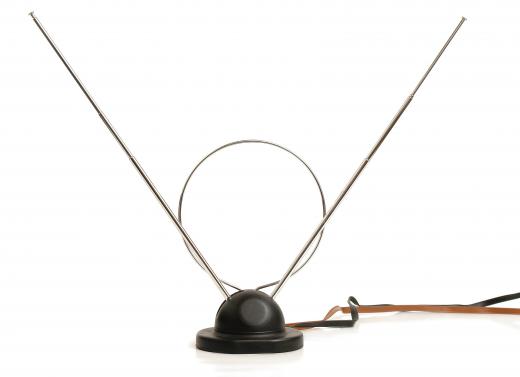What are Dipole Antennas?
Dipole antennas, also known as dipole aerials, doublets, or wire antennas, are a type of simple radio frequency antenna capable of both receiving and broadcasting a frequency. These are widely used in multiple technologies and as components of more complex antennas, due to their omnidirectional signal coverage. When radio frequency current flows into them, they produce either electromagnetic or radio signals. Like the more commonly known wire antennas, dipole antennas can be used in many places, from cars to televisions, and in AM-FM radios and wireless routers.
Originally invented by Heinrich Rudolph Hertz in 1886, dipole antennas provide the backbone for radio frequency broadcasts. The term dipole comes from the fact that these antennas are constructed of either a straight rod or two rods of equal length, also known as a conductor. This is then attached to a radio feed line its center point. This split creates the two poles of the antenna, or dipoles.

The length of the antenna should be half its wavelength. In other words, dipole antennas are most effective when they operate at a frequency with a wavelength that is twice the overall length of the antenna itself. Other variants can include three or five wavelengths, depending on the intended use of the device.
Although dipole antennas can be oriented vertically, horizontally, or at an angle, the polarization of their electromagnetic fields changes with their positions. This may alter how receptive they are to frequencies, depending on the polarization and how they align with the antenna position. For example, when adjusting classic, rabbit ear-style antennas to improve the picture on a television, the changes in antenna position actually change how the antennas align with the broadcast signal to boost overall reception. The same happens when adjusting the length or position of a car antenna to improve reception on the radio.

The antenna frequency itself consists of two elements — the RF current, and RF voltage. The strength of these elements is directly opposite, depending on the position on the antenna's length. It may be helpful to understand that the RF current's amplitude is strongest at the center, and weakest at the ends. In contrast, the RF voltage is weakest in the center and strongest at the poles.
It is possible to enhance the function of dipole antennas by combining the basic antenna with more sophisticated deflector or reflector components, which can improve gain and directivity. This boosts the overall signal, increasing the receiving or broadcasting capability of the antenna, and extending its reach. This method is particularly useful in wireless signal broadcasting, as in wireless access points.
AS FEATURED ON:
AS FEATURED ON:












Discuss this Article
Post your comments